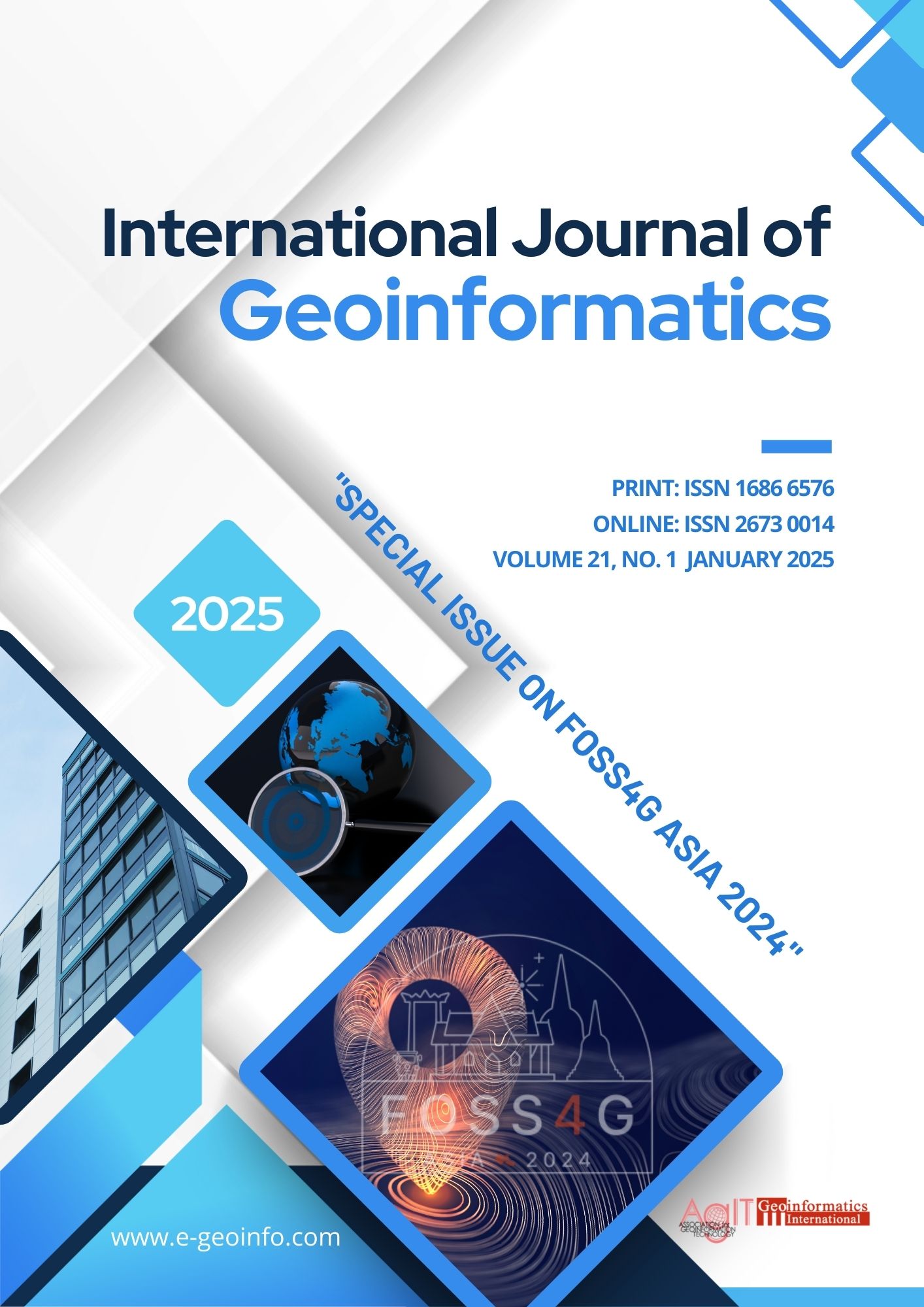Spatio-Temporal Drought Monitoring in the Chi River Basin from 2001–2020 Using MODIS Time Series Data and Google Earth Engine
Main Article Content
Abstract
Drought is a recurring issue in South Asia (SA) caused by extreme climate events, posing ongoing challenges for food management, sustainable agricultural practices, and livelihoods, especially in frequently affected areas. Earth Observation (EO) data provides valuable information for long-term drought monitoring across broad regions. However, a need remains to map and monitor spatial drought events over large regions and extended periods, particularly in the Chi River Basin. In this region, droughts have increased frequently, leading to low water-holding capacity and adversely affecting agricultural production and productivity. In this context, this study aimed: i) to identify spatial drought from 2001 to 2020 over the Chi River Basin, Thailand, using MODIS image time series via Google Earth Engine (GEE); ii) to analyze the correlation between Temperature Vegetation Dryness Index (TVDI), Standardized Precipitation Index (SPI), and Streamflow Drought Index (SDI) and land use provided by the Land Development Department (LDD). The TVDI index was generated for dry and wet seasons to map and monitor the spatial distribution of drought events over 20 years. The spatial drought based on TVDI, SPI, and SDI was determined to identify their relationship. Historical droughts from TVDI were most frequent during the dry seasons of 2005 (82%), 2013 (80%), and 2004 (78%), and appeared in the wet seasons of 2019 (41%), 2017 (41%), and 2009 (38%). The TVDI drought map had a slightly low coefficient of determination (R²) for SPI and SDI, under 0.22 for all study seasons. However, these findings showed similar drought trends across all study years, with drought events predominantly occurring in the central and northeast parts of the region. In comparison, the spatial drought map in the year 2020 showed severe droughts, mostly impacting cassava and rice fields during the dry season and urban areas during the wet season. Our proposed workflow is reliable and robust, providing spatial drought areas with confidence in the accuracy and validity of our results. The mapped results provide as significant tool for drought mitigation planning and management.
Article Details

This work is licensed under a Creative Commons Attribution 4.0 International License.
Reusers are allowed to copy, distribute, and display or perform the material in public. Adaptations may be made and distributed.

